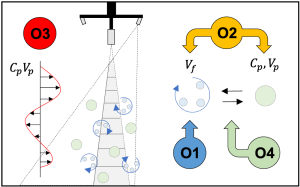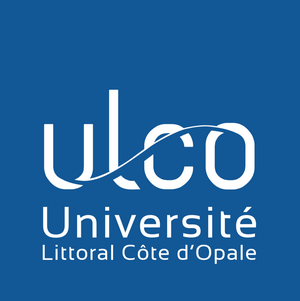

 All geophysical water flows are multi-phase flows, most of the time turbulent. This is the case for river and coastal flows, where sediments on an erodible bottom are transported in response to hydrodynamic forces with various small-scale processes. Understanding these sediment transport processes in turbulent flows is essential to predict sediment transport, and anticipate the long-term impacts of the multiplication of extreme events on rivers and coastal systems. Therefore, many attentions have been directed towards turbulence resolving two- phase flow simulations approaches, leading to significant advances in sediment transport modelling, in a will to tackle the challenge of understanding and accounting for the small- scale interactions between the flow turbulence and the dispersed particles. However, the validity of these models is constrained by our inability to provide high-resolution sediment flux (as a local product of the dispersed particles phase velocity and volume fraction) measurements in dilute and dense turbulent two-phase flows. Recently, only hydroacoustic techniques involving coherent Doppler sonars have offered means to resolve fluxes as well as second order turbulence statistics for the dispersed phase in dilute and dense flow conditions, and further suggest their potential to concurrently follow the fluid phase using the scattering properties of the turbulence itself, through the presence of turbulent microstructures formed by passive additive quantities.
All geophysical water flows are multi-phase flows, most of the time turbulent. This is the case for river and coastal flows, where sediments on an erodible bottom are transported in response to hydrodynamic forces with various small-scale processes. Understanding these sediment transport processes in turbulent flows is essential to predict sediment transport, and anticipate the long-term impacts of the multiplication of extreme events on rivers and coastal systems. Therefore, many attentions have been directed towards turbulence resolving two- phase flow simulations approaches, leading to significant advances in sediment transport modelling, in a will to tackle the challenge of understanding and accounting for the small- scale interactions between the flow turbulence and the dispersed particles. However, the validity of these models is constrained by our inability to provide high-resolution sediment flux (as a local product of the dispersed particles phase velocity and volume fraction) measurements in dilute and dense turbulent two-phase flows. Recently, only hydroacoustic techniques involving coherent Doppler sonars have offered means to resolve fluxes as well as second order turbulence statistics for the dispersed phase in dilute and dense flow conditions, and further suggest their potential to concurrently follow the fluid phase using the scattering properties of the turbulence itself, through the presence of turbulent microstructures formed by passive additive quantities.
| RUPTURE project stands in initiating new original research on sediment transport hydroacoustic metrology with the aim to define new methodologies prone to concurrently resolve both phases of turbulent two-phase flows, using pulse-to-pulse coherent Doppler sonar systems. |
RUPTURE will build on the most recent research in scattering theory, fluid mechanics and signal processing, implementing cutting-edge technology to produce comprehensive two-phase hydroacoustic flux measurements. RUPTURE will rely on a synergetic experimental and numerical approach to address its fundamental, analytical and methodological objectives. An experimental apparatus designed to reproduce isotropic turbulent single and two-phase flows using a calibrated micro bubble injection system, and its digital twin will assist RUPTURE in defining methodological scenarios for two-phase acoustic inversion, involving the contrasted scattering properties of turbulent microstructures and solid particles. This experimental/numerical synergy will provide an ideal environment to develop new generations of robust particle flux estimators in the frame of the statistical inverse theory, taking full advantage of the inherent stochastic nature of the echoes recorded by coherent Doppler sonars. The overall aim of these developments will be to investigate the dynamics of fine-scale sediment transport processes in dilute and dense geophysical aquatic flows, and their impacts on sediment fluxes. RUPTURE is the first attempt to develop a two-phase hydroacoustic inversion methodological frame using the flow turbulence properties recovered from passive additive quantities. This will enhance our understanding of hydroacoustic particle flux measurements, and therefore improve our ability to resolve and understand the fine-scale sediment transport processes that are yet to be fully accounted for in the recent turbulence resolved two-phase flow simulations, due to the lack of high-resolution experimental datasets.
The project will be organized around 4 scientific objectives : 
- The first scientific objective will be to produce a general scattering model for the MicroStructures (MS) formed by Passive Additive Quantities (PAQ) in turbulent conditions
- Then, we will focus on the discrimination of the amplitude and phase contributions of the solid and fluid flow phases embedded in the backscattered echoes
- With the third objective, we’ll try to qualify and quantify the resulting uncertainty on the instantaneous and net flux estimates
- The final objective concerns the investigation of the influence of the interplay between turbulence-particle and particle-particle interactions on the sediment flux dynamics
WP1 – Single and Two-phase flows experimental apparatus
- Coordinators: Guillaume Fromant (LISIC, Calais), Benoît Becquet (EILCO, Calais)
- Participants: Master Student, PhD. Student, Ghislain Poncin (EILCO, Calais), Fabien Flahaut (EILCO, Calais)
WP2 – Numerical simulations for backscattered echoes in single and two- phase turbulent flows
- Coordinators : Guillaume Fromant (LISIC, Calais), Georges Stienne (LISIC, Calais)
- Participants: François Schmitt (LOG, Wimereux), PhD. Student
WP3 – Turbulence-particles interactions experiments
- Coordinator: Guillaume Fromant (LISIC, Calais), François Schmitt (LOG, Wimereux)
- Participants: Benoît Becquet (EILCO, Calais), Master Student, Post-doc
Project environment :
- An experimental facility : a tank equipped with an oscillating grid and a micro-air bubbles generator to generate isotropic
turbulent flows in single and two-phase flow conditions. This equipment has been acquired in the frame of the BQR OGI project (2023) - A UB-Lab 2C (UBERTONE) : This system has been designed to send short pulses that are further backscattered by inhomogeneities on its path (here, particles and/or fluid tracers such as air-bubbles). This produces an echo that is recoreded by multiple receivers. The amplitude and phase of the echos is then used to produce colocated measurement profiles of velocity and concentration, at high spatial (~1mm) and temporal (~10ms) resolutions, hence its capability to return time-resolved particle flux profiles
- A cluster node : Bound to CALCULCO cluster machine, this node equipped with 2 CPU EPYC 9174F will allow to reproduce the experiments carried out in the frame of WP1 numerically (digital twin of the OGI tank).




